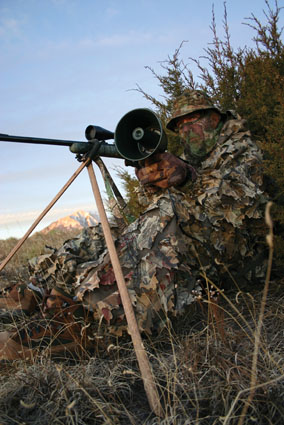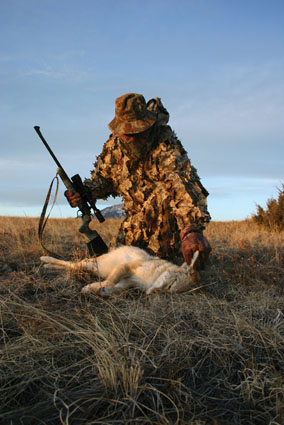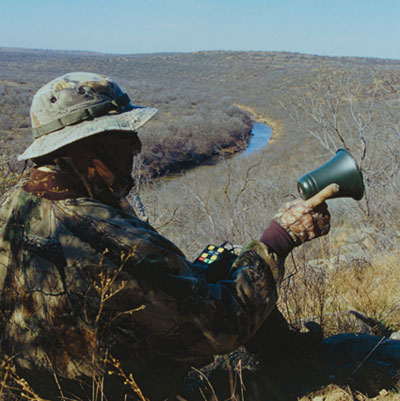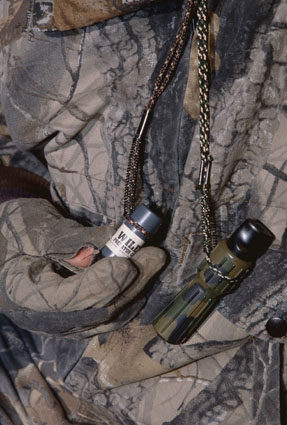 The Obvious Explanation
The Obvious Explanation
The obvious explanation for why animals scream is to vocalize the terror, fear, and pain of being ripped apart. Or, it might be in response to another injury, such as the rabbit I wounded in the beginning of this article or finding themselves caught in the jaws of a trap. In any case, distress cries trigger a "dinner bell" response in predators. They know from experience that the prey animal's physical wellbeing has been compromised, and the rabbit, bird, or rodent that attempted to escape their clutches on even ground is now easy prey.
This is a learned response. As a coyote pup learns to hunt, its parents teach it the art of chasing, catching, and killing prey. Adults will often capture and only injure prey animals for the benefit of providing these lessons. Each time the pup hears the prey species scream precipitated by these attacks, it reinforces the knowledge that these vocalizations mean a vital meal.
Predictably, predators respond to distress screams in relation to their status on the food chain. Those on the upper rungs — uneducated coyotes in most circumstances — are likely to charge in and capitalize on the situation, securing the meal and then guarding it from intruders. Smaller predators such as fox, bobcat, and birds of prey will exercise caution to avoid becoming collateral damage. If a larger predator has killed the prey animal, an element of danger exists and caution is prudent. But the need to eat still drives them to respond, just more cautiously.
 Community vs. the Individual
Community vs. the Individual
The most obvious reaction to attack is to vocalize terror and pain, but could there be a more selfless, evolutionary reason for this response? Is it possible prey animals are hard-wired to act for the good of the community — in a selfless sacrifice to preserve their kind? This theory holds that prey animals react altruistically to warn others of their species of danger, thus providing the opportunity for them to escape while sacrificing their own lives. To quote Mr. Spock from an early Star Trek episode: "The good of the many outweighs the good of the one."
In this light, the distress cries of an animal in the jaws of a predator might be a desperate, final act, even though that animal’s outcome is almost certain death. A predator's response is predictable, immediate, and focused on the sound source. The distress cries of the victim provide warning and escape for other members of its community, while the individual is sacrificed for the good of the community. This theory makes sense when you consider that Mother Nature cares very little for the individual. The overall health of the species, the species community, and the environment they occupy take precedence over individual needs and survival.
 The Art of Escape
The Art of Escape
What about a more selfish explanation? This explanation does prioritize individual survival. Self-preservation is a strong motivator, hard-wired into all animals. It requires that they fight for life to the bitter end. And this behavior might provide yet another theory as to why they scream. What if prey animals scream to confuse or frighten their attacker? Or, to attract other predators! Why would a rabbit trying to fight off certain death from one predator want to attract the attention of more predators? The answer might be a desperate attempt at escape. Is it possible that distress screams are intended to trigger a chase response in all predators within earshot, and that the confusion and competition of multiple predators (in some cases fighting to steal a meal or protect their kill) might provide an opportunity for escape? Far-fetched? Not really.
Researchers at the University of Saskatchewan conducted a series of experiments to analyze a chemical response in prey fish that were being attacked by predatory fish. It was discovered that the minnows they were studying released chemical pheromones into the water when they were attacked, and those chemicals triggered an attack response in predatory fish. The scientists hypothesized that an animal's chances of escape increased when a second predator approached and tried to steal the prey from the first predator, and that the release of the pheromones was actually a defense mechanism to elicit escape. In fact, their experiments actually upheld this theory. When minnows in the wild released chemical alarm substances, they escaped from pike more often than minnows without alarm substances.
Birds and mammals seem to follow a similar pattern. A study at Point Reys Bird Observatory in California tested the hypothesis that prey-distress screams facilitate escape. In seven trials, they observed multiple avian predators responding to distress screams, in some cases chasing each other. They surmised that the rapid approach of competing predators could enable the prey to escape.
 What Does It All Mean?
What Does It All Mean?
What value do these theories hold in terms of making us better predator hunters? If you do a significant amount of predator hunting, you're already capitalizing on these behaviors even though you probably haven't devoted much conscious thought to the biology of predator/prey relationships. You know all animals react and respond in predictable manners, and you take advantage of this knowledge by exploiting their weaknesses. That might mean using decoys to dupe waterfowl, grunt calls to lure white-tailed bucks into bow range, purrs, and clucks to attract tom turkeys or the screams of a rabbit in distress to bring predators into rifle range.
The rabbit screams, the predator responds, and we take advantage of this age-old relationship by imitating the cries of a rabbit in distress. It makes perfect sense, and factoring in all the above, I have modified my techniques.
• I rarely remain at a stand for more than 20 or 30 minutes. Predators within earshot that are inclined to respond will do so in short order — often within the first few minutes, so be ready! My time is best spent getting in as many stands as possible during the limited time available. The terrain dictates how far I travel between stands. In rugged, hilly or timbered country where sound doesn't carry as far, I might only move a quarter-mile between setups. In open country, I'll put a half-mile or more between stands. An exception to this rule applies if I'm specifically targeting bobcat, which, in cat fashion, are typically slower to respond to the call.
• If I call in a critter, I continue to call regardless of whether I get a shot. There's a good chance other predators are on the way, maybe having to cover more ground or approaching more cautiously. Many times I've called in a second coyote with one already lying dead on the ground. This is especially true during the mating season when they’re traveling in pairs.
• Uneducated coyotes often approach the call with the confidence that comes from their position on top of the food chain, sometimes even ignoring the wind in a rush to secure a free meal. Smaller predators such as fox or bobcat are more likely to circle downwind, testing the air currents for any sign of danger. They know there most likely is another predator at the kill, and they want to avoid becoming the second course. If I'm hunting with a buddy, we do the sensible thing. One of us will call while the other takes a position downwind 50 or even 100 yards to watch for circling critters. If you're hunting alone, remote-controlled electronic callers are the ticket. You can set up downwind from the caller with open-shooting lanes toward the sources of the sounds. In tight country, I'll sit next to the caller with an open shooting lane downwind.
• Mix it up. If one sound, say a rabbit in distress, has lost its effectiveness, try another distress sound. This is where electronic callers shine. Years ago, during a predator hunting trip to Texas, Gerald Stewart, son of famed predator pioneer Johnny Stewart, told me that variety is the key to success when in heavily hunted areas.
"It's like the old fisherman's tackle box," Gerald told me. "He might have 25 different lures of various colors and styles. Sometimes a topwater bait might be more appropriate and more effective than a spinner, or one color might outperform another. You have to change with the conditions. It's the same with predator calling. Electronic callers, with a variety of recorded sounds, give you that flexibility."
And don't forget a howler, which is especially effective during mating season when coyotes are particularly territorial. I like to mix it up; combine barks and howls with the sounds of a rabbit in distress.
• Predators also respond to the distress cries of other predators — especially their young — and the sounds of fighting predators. Don't get hung up on food sources. These territorial or curiosity responses are particularly valuable in areas where hunting pressure has educated predators to the typical rabbit screams. I've found the recorded cries of a gray fox or red fox pup in distress is an effective sound where "Dying Rabbit Blues" has worn out its welcome.






